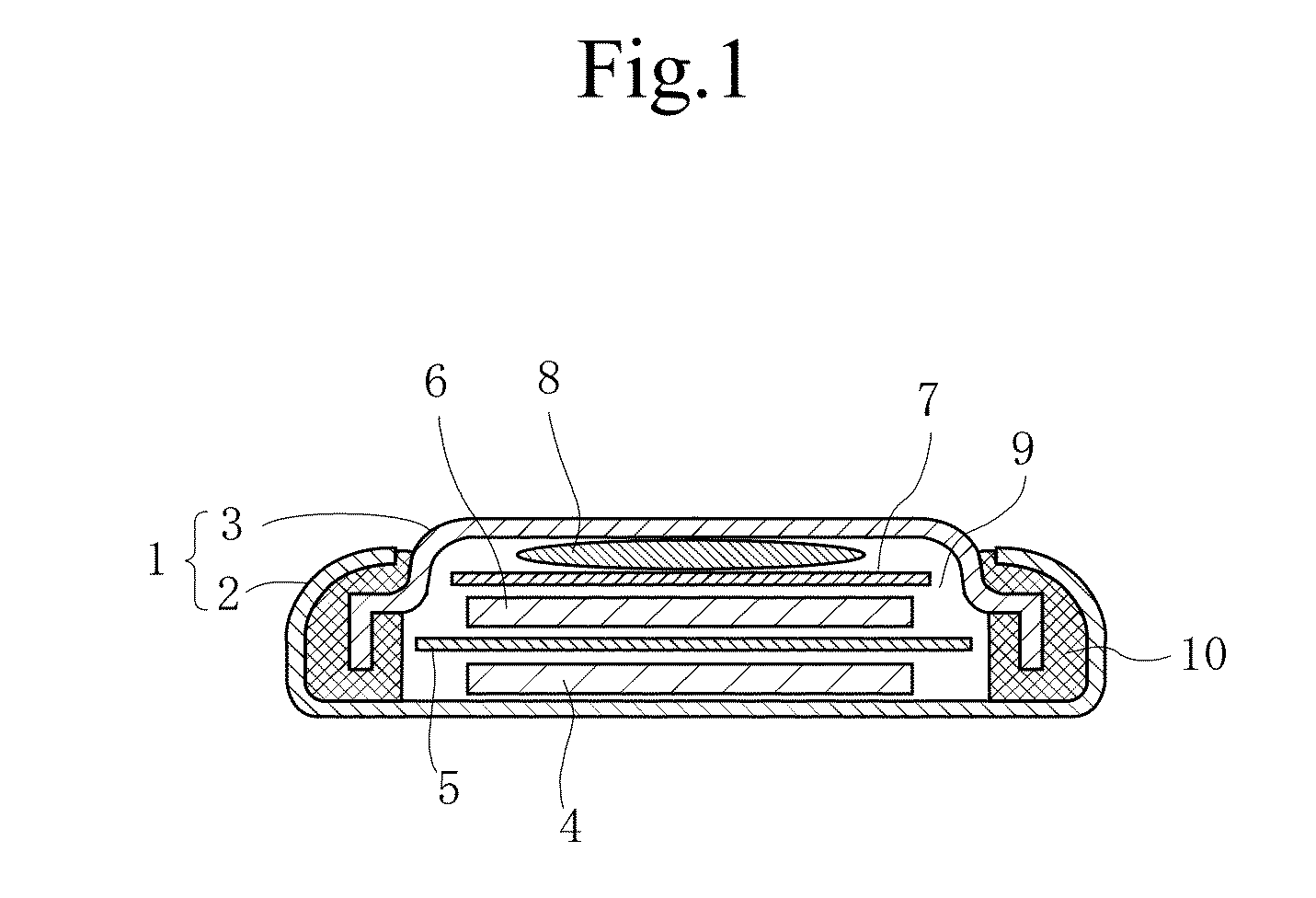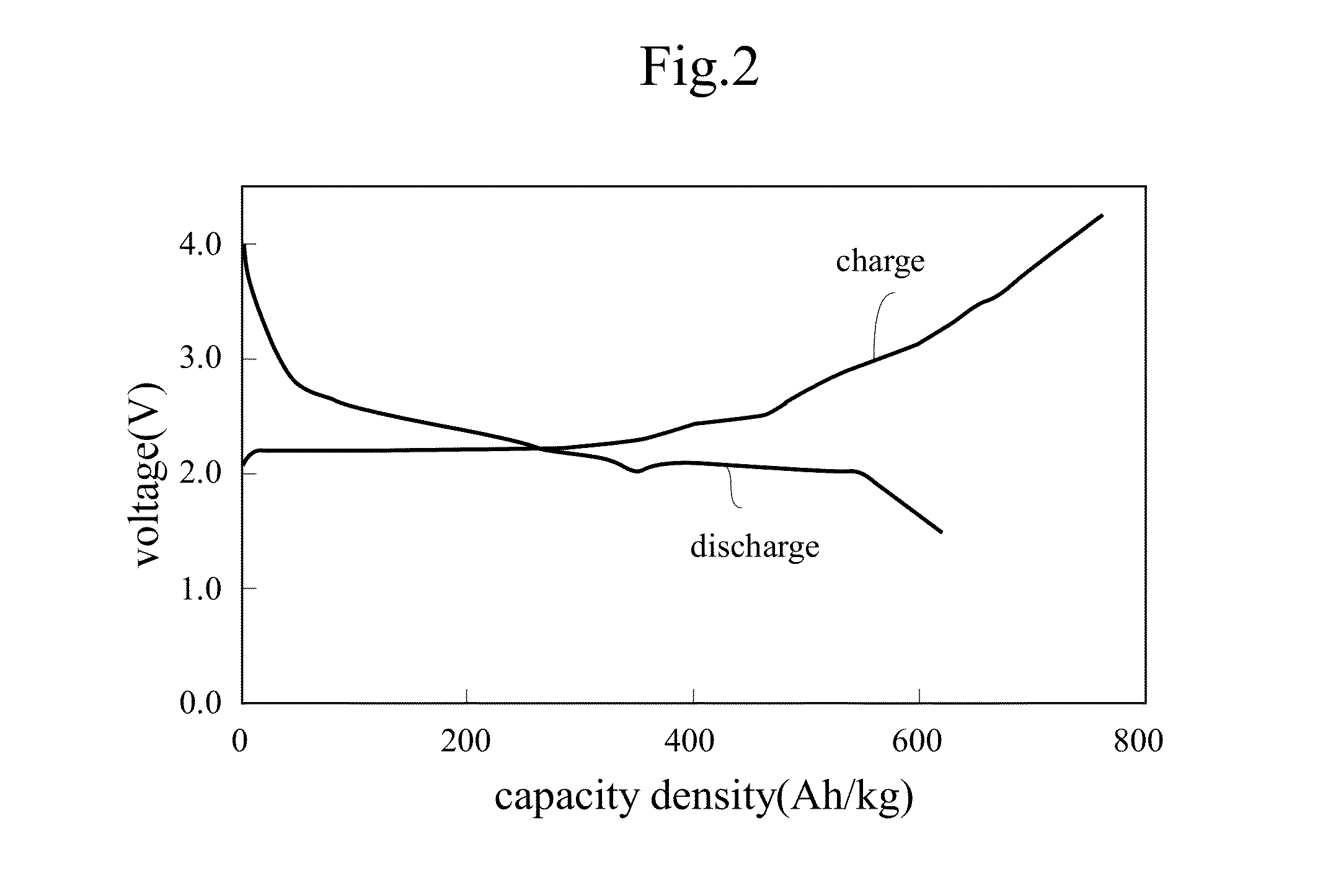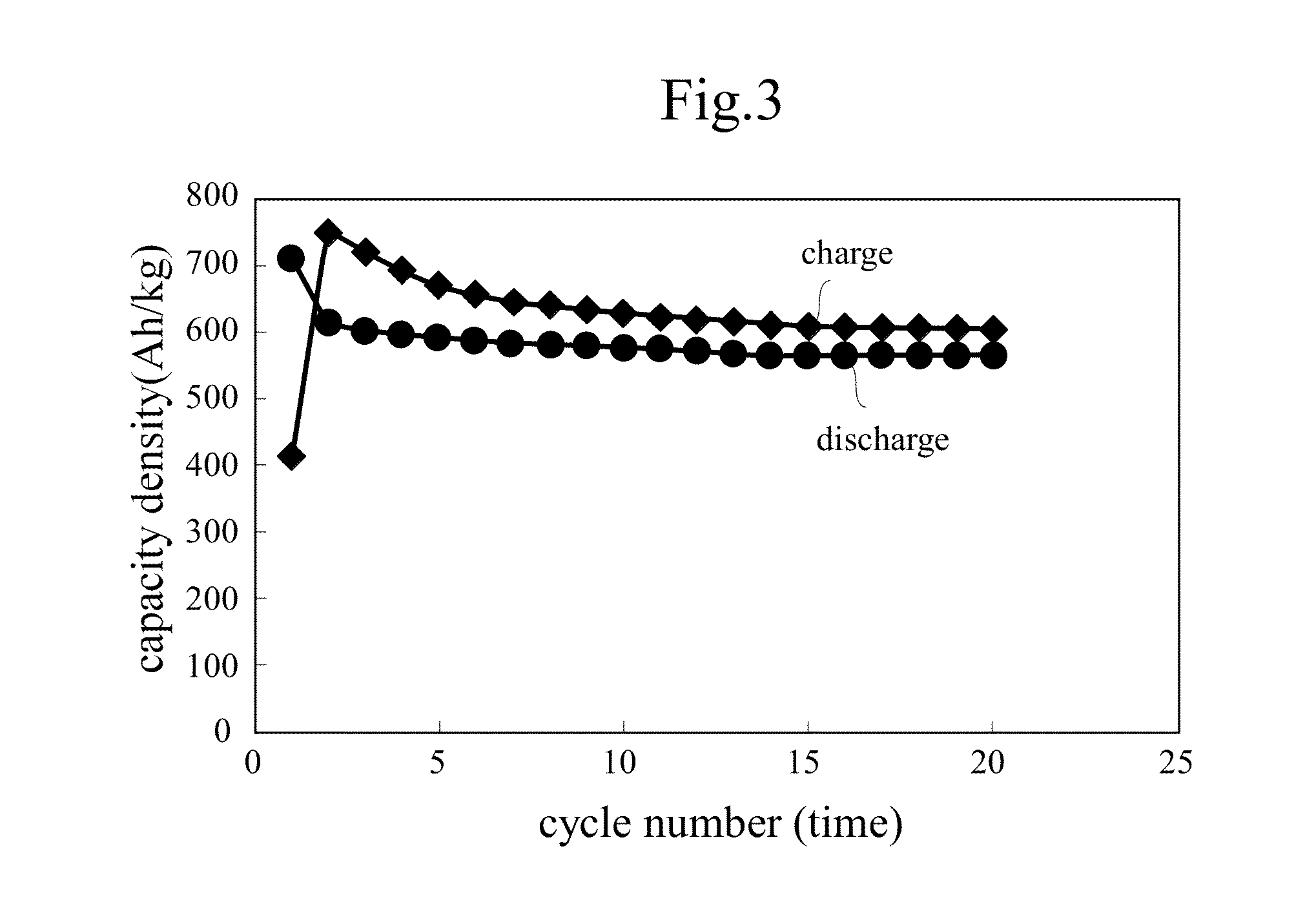Secondary battery and method for charging and discharging secondary battery
a secondary battery and battery technology, applied in the direction of batteries, non-aqueous electrolyte cells, sustainable manufacturing/processing, etc., can solve the problems of difficult situation to achieve a secondary battery with stable and excellent cycle characteristics, low cost, and low cost. , to achieve the effect of high charge-discharge efficiency, high capacity density and stable repeating
- Summary
- Abstract
- Description
- Claims
- Application Information
AI Technical Summary
Benefits of technology
Problems solved by technology
Method used
Image
Examples
example 1
Preparation of Battery Cell
[0109]As a material for an active material, a rubeanic acid represented by the chemical formula (2a) was prepared, and sulfolane represented by the chemical formula (1a) was prepared as a solvent of an electrolyte solution.
[0110]Then, 300 mg of the rubeanic acid, 600 mg of graphite powder as a conductive material, and 100 mg of polytetrafluoroethylene resin as a binder were respectively weighed, and these weighed materials were kneaded while being uniformly mixed as a whole to obtain a mixture.
[0111]Subsequently, the mixture was pressure-formed to prepare a sheet-shaped member having a thickness of about 150 μm. Then, the sheet-shaped member was dried at 70° C. for 1 hour in vacuum, and then punched out into a round shape with a diameter of 12 mm to prepare a positive electrode active material containing the rubeanic acid as a main component.
[0112]Next, LiN(C2F5SO2)2 (electrolyte salt) having a mole concentration of 1.0 mol / L was dissolved in sulfolane to ...
example 2
Preparation of Battery Cell
[0140]A battery cell was prepared by following the same method / procedure as in Example 1 except for using, as a solvent for an electrolyte solution, ethyl isopropyl sulfone represented by a chemical formula (Ig) in place of sulfolane.
[0141]Check of Operation of Battery Cell
[0142]The battery cell was charged and discharged in the same conditions as in Example 1 and their operation was checked.
[0143]FIG. 7 shows charge and discharge curves at the time when the second time of charge and discharge, in which the charge and discharge characteristic is stabilized, was performed. The horizontal axis indicates a capacity density (Ah / kg) and the vertical axis indicates a voltage (V).
[0144]As is apparent from FIG. 7, it was verified that the battery is a secondary battery which has plateaus at two locations where charge and discharge voltages are 2.2 V and 2.4 V and has a discharge capacity of about 600 Ah / kg in terms of a capacity density.
[0145]FIG. 8 shows cycle ch...
PUM
 Login to View More
Login to View More Abstract
Description
Claims
Application Information
 Login to View More
Login to View More - R&D
- Intellectual Property
- Life Sciences
- Materials
- Tech Scout
- Unparalleled Data Quality
- Higher Quality Content
- 60% Fewer Hallucinations
Browse by: Latest US Patents, China's latest patents, Technical Efficacy Thesaurus, Application Domain, Technology Topic, Popular Technical Reports.
© 2025 PatSnap. All rights reserved.Legal|Privacy policy|Modern Slavery Act Transparency Statement|Sitemap|About US| Contact US: help@patsnap.com



